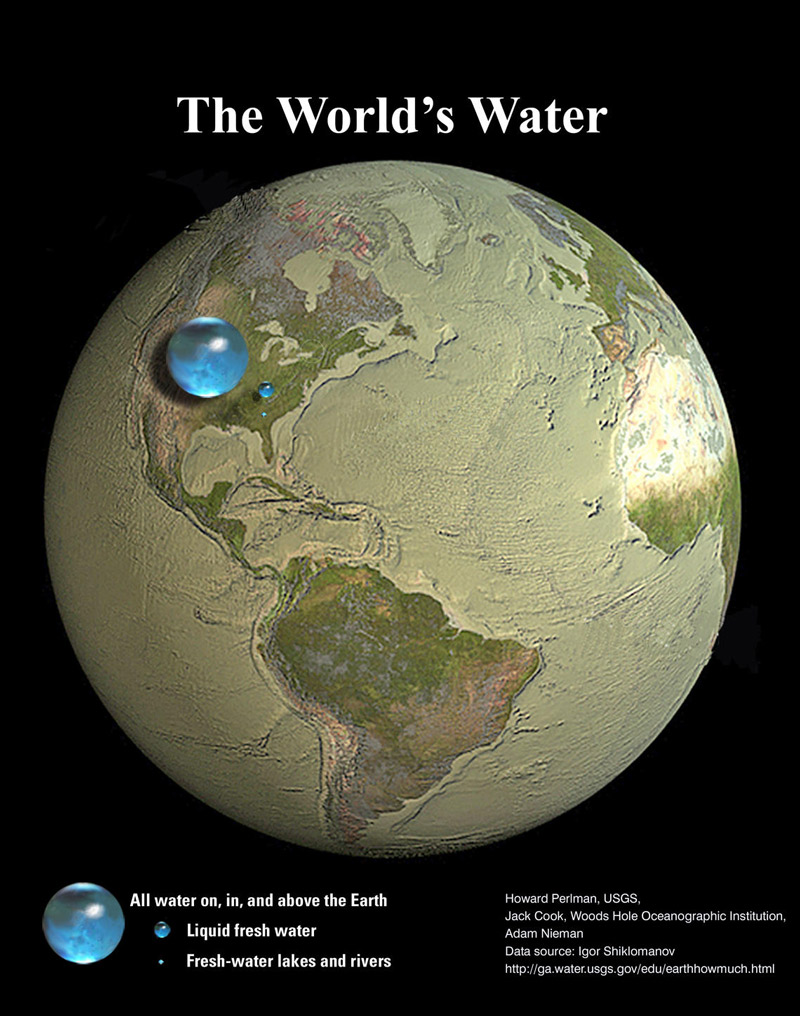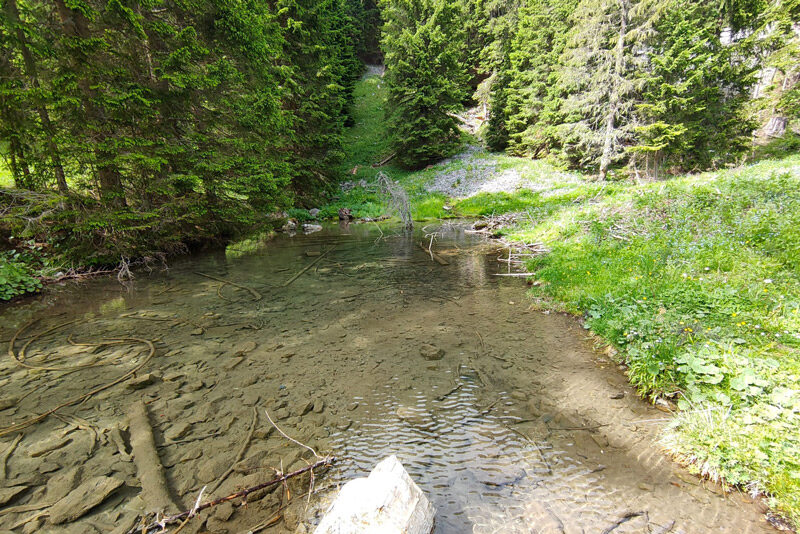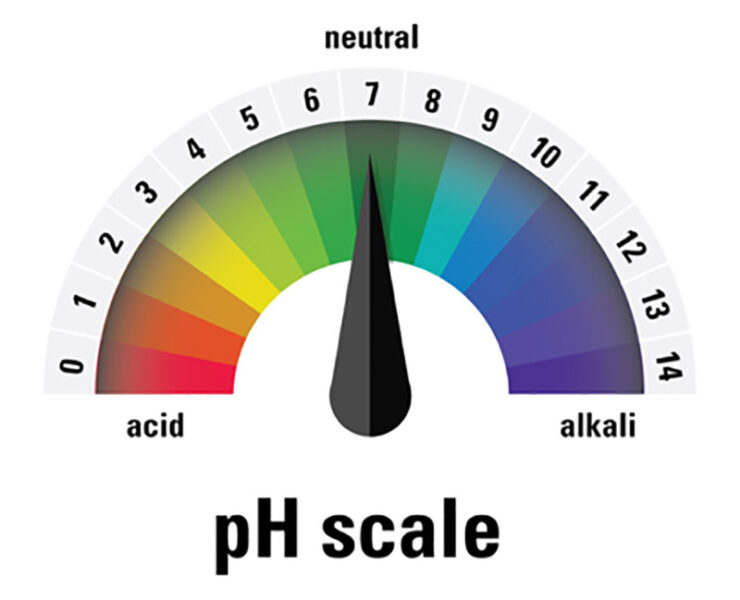Watery world – hands-on experiments from Earthlearningidea Teach article
Need inspiration for teaching about fresh water on Earth? Try these Earthlearningideas for classroom activities that can be performed with very little equipment.
The importance of water
Water is one of the defining features of the Earth. Most water is sea water (about 97%), while fresh water accounts for only 2.5%, most of which is ice. For liquid fresh water (0.8% of total water on Earth), the ratio of surface water/ground water is around 1:25.

Image: Howard Perlman/USGS, Jack Cook/Woods Hole Oceanographic Institution Adam Nieman, Igor Shiklamonov, public domain
Continental liquid water, despite being a tiny part of the Earth’s water stock, and unevenly distributed, is the part that most affects human life and drives important processes on land.
Water processes on land are connected to the global water cycle, which moves water and heat through the ocean, the atmosphere, the biosphere, and the continents.
“To understand, conserve, preserve, and protect water”,[1] it is important to understand the processes that take place on land, but also to connect them to the big picture of the global water cycle. This is especially true on a warming planet, where a growing population needs an increasing amount of a limited resource – clean fresh water – which is already affected by multiple anthropogenic pressures.
The importance of fresh water is central to one of the Agenda 2030 Sustainable Development Goals (SDG no. 6 – Clean Water and Sanitation) identified by the United Nations. Climate change and population growth are already causing a global water crisis. Currently, a staggering 2.2 billion people around the world do not have safe drinking water. By 2050, about 5 billion people (more than half of the global population) are predicted to face water stress.
For all these reasons, in 2021, the Earth Science Week is focused on the theme of water, particularly its importance for living beings.
In this article, we present two practical activities that address water processes chosen from Earthlearningidea, a web collection of geoscience teaching activities. These activities address diverse topics present in school curricula based on the cognitive acceleration through science education (CASE) strategy, a recognized effective, constructivist approach to science teaching.[2] These activities are suitable for both primary and secondary schools.
All you need to celebrate Earth Science Week 2021 is your students. With a few materials, your skills, and your students’ interest, understanding and success are assured!
Activity 1 – From rain to spring: water from the ground
This activity shows how rain becomes groundwater that flows through the ground and then comes out in springs. From this model, you can visualize a hidden part of the water cycle usually misunderstood by students.[3,4] Groundwater pollution by toxic waste, in relation to the water supply for human uses, is also addressed.
The activity is suitable for students aged 10–18 and requires less than one hour, including setting up.
Safety notes
Once the equipment is ready, there are no relevant safety issues, although students should be instructed not to drink the water. If you use ink, students can wear disposable gloves to avoid staining their hands.

Image: Earthlearningidea
Materials
- a rectangular transparent plastic container (about 30 cm × 40 cm)
- a plastic tray to catch overflow
- washed sand to fill the container
- two plastic coffee cups with the bases cut out
- a wooden block to raise one end of the container
- two plastic separators cut from any plastic sheet
- water in a separate container; enough to overfill the sand container
- a spoon to excavate a ‘well’ or to bury ‘waste’
- model ‘waste’ made of paper (e.g., toilet paper) dipped in ink or food colouring
Procedure
- Fill the container with sand and position the separators and cups as shown in the pictures.
- Using the spoon, bury the waste at different depths (one near the surface, one at intermediate depth, and the other near the bottom) in the three lateral sectors of the container.
- Raise the side of the container with the cups using the block (or side of the tray) and begin pouring water into the cups. Through the sides of the plastic container, you will soon see that the sand becomes wet, and the water flows ‘downhill’.
- Ask the pupils where the water is likely to come to the surface, as you continue to ‘top up’ the cups with water. Water will appear near the cups or at the lower end of the container – in each case, water emerges from the sand as a ‘spring’.
- Ask the pupils if they wanted to get water out of the ‘ground’ before it reached the ‘spring’, what they could do. The answer would be to dig or drill a well somewhere above the spring and pump out water. Ask a student to dig a hole with a spoon – the hole will soon fill with water.
- Ask the students from which depth the waste is likely to appear first, polluting the spring. Depending on how the model is set up, the waste can appear first from any of the three locations. The key point is that, no matter how deeply the waste is buried, it will always reach the surface, causing pollution, unless it is buried in leakproof containers or impermeable rocks.

Image courtesy of Giulia Realdon
Discussion
Groundwater is of paramount importance for providing clean fresh water for human use. However, one of the less understood parts of the water cycle involves the location and movement of underground water, as shown by research.[5] For example, a common misconception is the existence of underground ‘lakes’ instead of water being retained in the pore spaces of aquifers.
To address the issue of groundwater being a key water source for human consumption, you can ask the students to research aquifers and water supplies in their region, and then ask them to explain similarities and differences between the model and real aquifers.
You can also stimulate the discussion by asking:
- Which is, in general, less polluted (by chemicals and/or microbes): surface or underground water? Why?
- What is the fate of waste and other chemicals (pesticides, fertilizers) dispersed in the ground?
- What is the best way to dispose of waste and toxic chemicals?
- Encourage them to research chemical accidents involving the dispersal of waste/toxic chemicals into the ground.
Activity 2 – The watery world of underground chemistry
If you want to explore the chemical processes of underground water, this activity gives the opportunity to reflect on the many processes that affect hidden water. Despite its technical simplicity, this activity can elicit a lot of reasoning, meaningful links with real-world processes, and a stimulating perspective on the interconnections between different Earth systems.
The activity is suitable for students aged 10–18 and requires less than one hour.
Safety notes
When using the pH indicator, wear eye protection; pH indicator is flammable; do not swallow

Image: Tara Gross/USGS, public domain
Materials
- tap water or rainwater (ca. 1 litre)
- universal pH indicator solution
- pH colour scale (printed)
- eye protection
- drinking glass
- a drinking straw
- a bottle of non-carbonated spring water
Procedure

This activity works best outdoors but can be run in the classroom. Firstly, introduce pupils to the pH scale and how pH can be measured using universal indicator, providing examples. Then explore the journey of water in four steps:
- Tap water/rainwater: ask the students which colour/pH they expect to see in these liquids, then test them with the pH indicator.
- Soil water: pour water onto the ground. Ask what will happen to water in the soil, reminding students that the soil contains decaying vegetation (producing acids) and animals that are respiring (producing CO2). Ask how one can mimic the effect of respiring animals on water. Have students blow for 30–60 seconds into a glass of tap/rainwater + pH indicator using a straw (the colour will change) and ask for their comments. Ask what then will happen to the acidic water in the soil (plant transpiration, evaporation, infiltration into the rocks below).
- Groundwater: ask how acidic water is likely to affect the rocks (chemical reactions, e.g., with carbonate rocks), then ask what will happen to this water over time (downhill flow). Ask whether this water will come out of the ground; students will probably mention springs.
- Springwater: Following these discussions, ask what colour they would expect pH indicator to turn in spring water. Get out the bottle of spring water, open it, pour some into the glass, and test it with the indicator.
Discussion
To summarize the activity, ask which of the Earth’s spheres have been mentioned in the discussion; many students will realise that the atmosphere (rainwater, origin of tap water), hydrosphere (trickling into the soil, soil water, groundwater, springs), lithosphere (soil and rock), and biosphere (animals and plants in the soil) have all been discussed. Highlight the multiple interconnections among the Earth’s spheres that make our planet a complex system, upon which humanity depends and plays an increasingly significant role.
About CASE: a successful approach to teaching science and more
Cognitive Acceleration through Science Education (CASE) is a teaching programme developed in the UK in 1981 and successfully tested in the following years.[1] It aims to improve cognitive skills through science teaching, grounded in the theories of Piaget and Vygotsky.[6,7]
The CASE methodology is based on five ‘pillars’:
- Concrete preparation: preparing the ground, ensuring familiarity with the apparatus, the terminology, and the problem being addressed.
- Construction: collecting data and detecting patterns in the data.
- Cognitive conflict: when new data does not fit the expected pattern, challenging students’ previous knowledge.
- Metacognition: reflecting on one’s own thinking, verbally or on paper.
- Bridging: applying this new understanding to new contexts and the real world.
References
[1] Geoff Camphire (2021) Earth Science Week 2021 Theme Announced: ‘Water Today and for the Future’ American Geosciences Institute
[2] Adey P, Shayer M, Yates C (2003) Thinking Science Professional edition. Nelson Thornes, London. ISBN-13: 978-0174386735.
[3] Ben-zvi-Assaraf O, Orion N (2005) A study of junior high students’ perceptions of the water cycle. Journal of Geoscience Education 53:366–373. doi:10.5408/1089-9995-53.4.366
[4] Cardak ON (2009). Science students’ misconceptions of the water cycle according to their drawings. Journal of Applied Science 6:865–873. doi:10.3923/jas.2009.865.873
[5] Brody MJ (1993). Student understanding of water and water resources: A review of the literature. Annual Meeting of the American Educational Research Association. Atlanta, GA.
[6] Piaget J (ed.) (1967) Logique et connaissance scientifique Editions Gallimard. Encyclopédie de la Pléiade, vol. 22. ISBN-13: 9782070104130
[7] Vygotsky, LS (1962) Thought and language. Cambridge MA: MIT Press. ISBN: 9780262220033
Resources
- Find the original activities on the Earthlearningidea website:
– From rain to spring: water from the ground and accompanying video with pedagogical guidance;
– The watery world of underground chemistry;
– Another Earthlearningidea activity on the water cycle.
- Teach your students about our water footprint: Kelly S (2020) Do you know your water footprint? Science in School 50.
- Learn about the world’s water crisis.
- Experiment with phase transitions in water: (2021) States of matter & phase transitions. Science in School 51.
- Read about the importance of oceans for climate change: Harrison T, Khan A, Shallcross D (2017) Climate change: why the oceans matter. Science in School 39: 12–15.
- Have your students predict the weather: Birba M, Kondilis T (2016) Wind and rain: meteorology in the classroom. Science in School 38: 36–41.
- Learn more about the properties of fresh water.
Review
The value of water to our world is immeasurable. The availability of this water that we can use is decreasing. With curricula changing to help our students recognize the value and importance of such resources, this article presents the perfect opportunity to support this. It is vital that we use opportunities to make visible processes that students cannot see; such as groundwater within the water cycle. The activities within this article could be used as a class demonstration, a class group activity, an activity challenge at home, a basis for discussions, or an idea for a student science project.
The authors have presented the information and activities very well for teachers wanting to deliver this material to their students. Connections are made to the water cycle as a ‘global’ water cycle. This emphasizes the ‘bigger picture’. I look forward to introducing the term ‘global’ to my teaching of the water cycle and these activities to support the learning.
This topic also demonstrates the links between geography and science, especially when it comes to human effects on the environment.
Sinead Kelly, Science and Biology Teacher, St. Olivers Community College, Ireland





